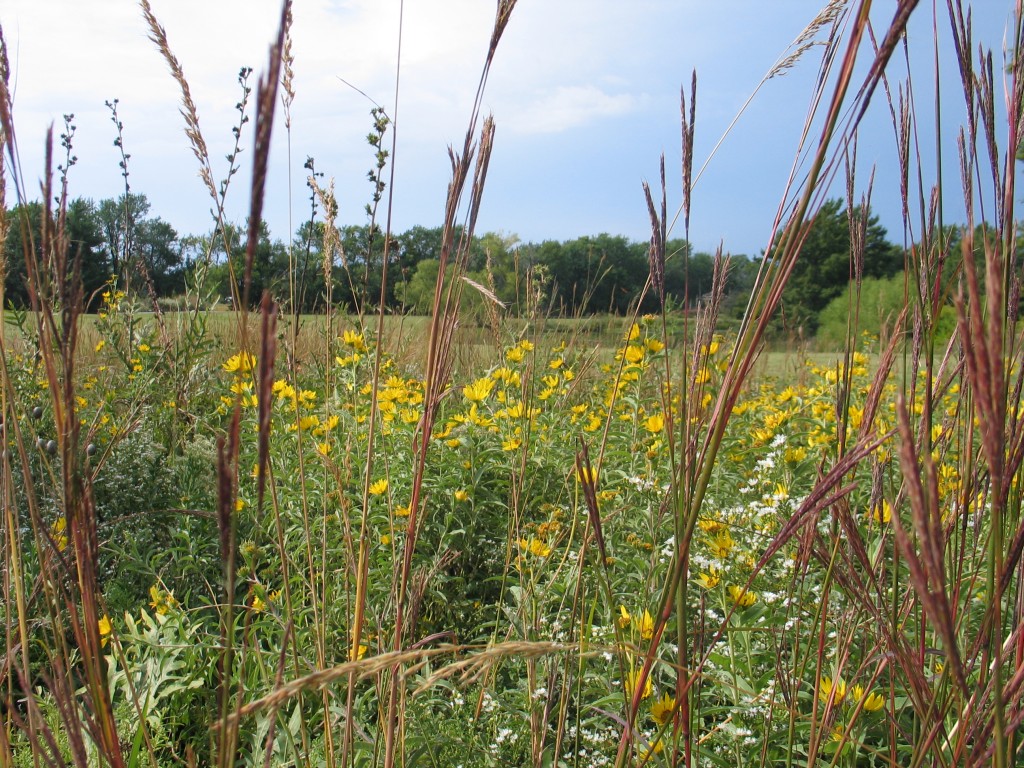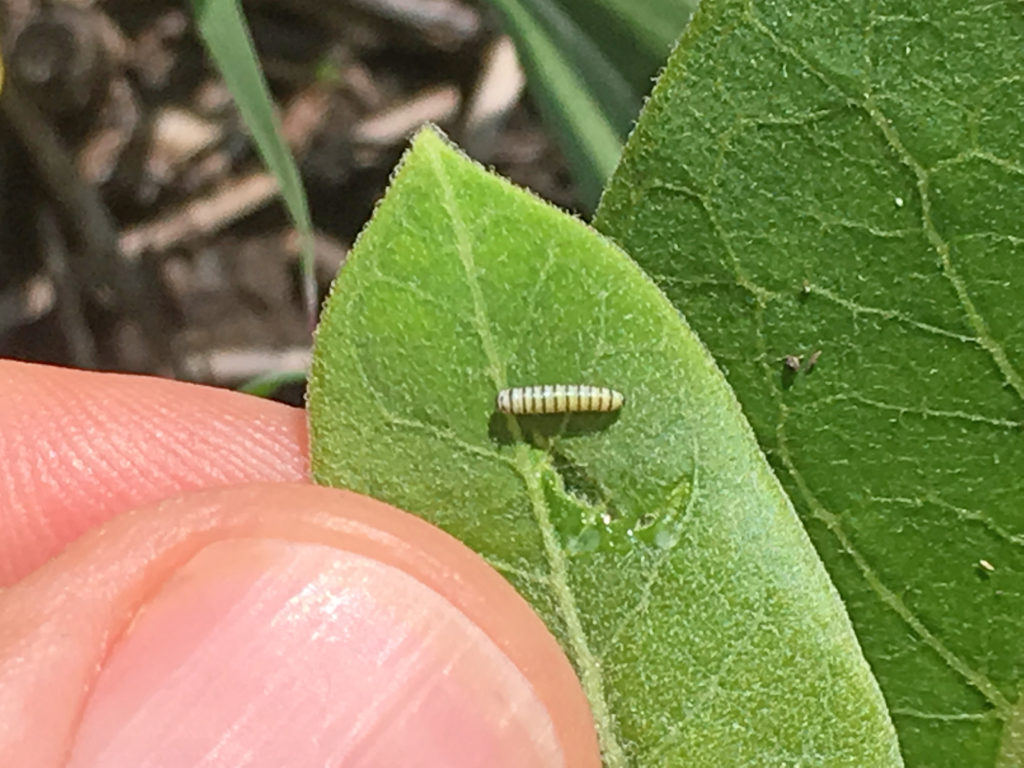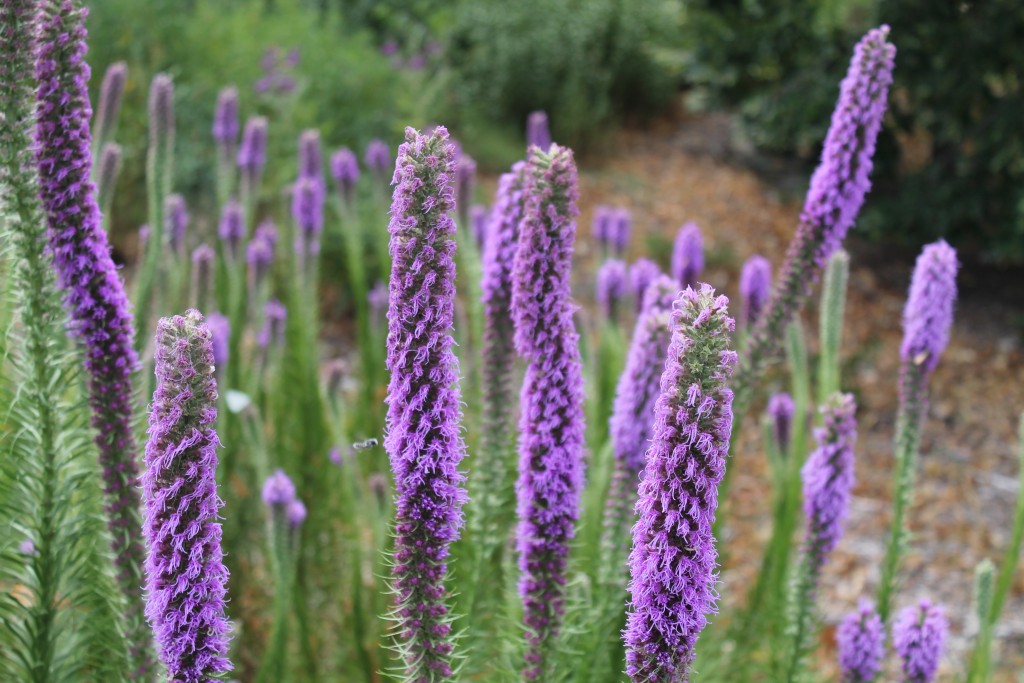I have been reminded over the past few weeks about about the importance of keystone natives. There is a growing body of research that touts the benefits of keystone species of trees, shrubs, wildflowers and grasses to the food web. According to Doug Tallamy, landscapes without keystone plants will support 70–75% fewer caterpillar species than a landscape with keystone plants, even though it may contain 95% of the native plant genera in the area. Keystone plants must be included in your native garden design.
Take a look at Doug Tallamy’s book, Nature’s Best Hope: A New Approach to Conservation that Starts in Your Yard for more data.
The food web includes, plants, insects, pollinators, birds, lizards, toads, frogs, and mammals, from rodents up through bears. Each is reliant on the other for their survival. Tallamy focuses much attention on trees that support the food web such as oaks, cherry, cottonwood, willow, and birch. However, there are many native perennials that are also key components of this food web. To provide a solid foundation for a healthy food web in your garden, start with this list of native wildflowers to include in your landscape:
Goldenrods (Solidago sp.)
These summer blooming wildflowers with bright yellow flowers can be striking in the landscape. However, they have a reputation for causing allergies. In truth, this is unlikely because goldenrod pollen is large and heavy and is not carried by the wind. Rather, it is giant ragweed that is spreading pollen through the air at the same time. The plant is insect-pollinated by many wasps, moths, beetles, honey bees, monarch butterflies and other beneficial pollinators searching for a sip of nectar. In total, 11 specialist bees and 115 different caterpillars need these plants. There are around 50 species of insects with immature forms that feed on the stems of goldenrod.
I like Solidago rigida, Solidago nemoralis, Solidago ‘Wichita Mountains’, Solidago canadensis ‘Golden Baby’, and Solidago ‘Fireworks’ for sunny areas. For shade, I choose to plant Solidago odora, Solidago ulmifolius or Solidago caesia. It is safe to say that goldenrods are powerhouse plants that deserve a place in your native garden.

Asters
A diverse genus that supports 112 species of insects, asters are a valuable late-season (September – November) source of pollen for bees and nectar for bees and butterflies. During the summer, the asters are host plants to the caterpillars of some of the crescent and checkerspot butterflies. As summer wanes, asters start blooming with colors of white, purple, and pink depending on the species. Fall provides a unique challenge for pollinators and asters help with both migration and overwintering butterflies and bees.
A few of my recommended forms are Aster oblongifolius ‘Raydon’s Favorite’ and ‘October Skies’, Aster novae-angliae varieties, Aster laevis and Aster ericoides ‘Snow Flurry’ for sun. In a shady area, try Aster divaricatus ‘Eastern Star’, Aster cordifolius, and Aster macrophyllus.

Sunflowers (Helianthus sp.)
There are eleven species of sunflower recorded in Kansas. These wildflowers are not usually fit for a formal garden setting, because they spread vigorously by seeding and rhizomes. They have a tendency to push out other desirable plants. However, they support 73 species of insects, so we maybe need to find a place for them.
I’m not referring to the large-headed annual cultivars you see growing in a field, but rather the true native perennials with bright yellow flowers seen growing along the roadside in the late summer and early fall. Plants provide lots of nectar and pollen, and the seeds are eaten by many birds and other wildlife. I would encourage you to try a few sunflowers in the peripheral areas of your yard where they can spread out and have room to roam.

Milkweeds
Monarchs are in peril. Milkweeds are one of the answers to reversing their plight. By planting more milkweeds, monarch will find these larval food sources more readily. Milkweeds are larval host plants for Monarch and Queen Butterflies and the Milkweed Tussock Moth. Many bees, wasps, butterflies and beetles visit milkweed flowers for the nectar. Milkweed plants typically produce a lot of nectar that it is replenished overnight. Nocturnal moths feast at night and other pollinators flock to these important plants during the day.
Choose butterfly milkweed (Asclepias tuberosa) or green antelope horn milkweed for your formal garden and common, Sullivant’s, or whorled milkweeds for the outskirts of your property.

Blazing Stars (Liatris sp.)
Liatris are very important wildflowers. The vibrant purple blooms in summer support many great insect species. They are quite adaptive with different species growing in dry to moist soil conditions. There is literally a blazing star for just about every garden setting.
I prefer Liatris pycnostachya and Liatris aspera, but many others, including Liatris ligulistylis and Liatris punctata, are nice too.

Planting just natives is not enough. Garden designs and plant communities must contain at least some keystone plants to positively impact the food web. This is the start of a list, but there are certainly more plants to choose from. Check out Keystone Natives for the Food Web-Part 2 and Keystone Natives for the Food Web-Shrubs.
